MfoM postmortem
MfoM postmortem
It has been a little over two years since Manna for our Malices was launched to paying audiences on Steam and Itch. (Incomplete/demo versions had been available for free on itch during much of development.) Shortly before the official launch, I wrote the MfoM pre-postmortem.
I can’t give any intelligent update on almost anything covered in the pre-postmortem, which focused on themes and the kind of commentary on the genre I was trying to make. I’ve gotten a fair number of reviews, but none have mentioned these themes; if people are “getting the message” then they are keeping it to themselves. More likely, many people aren’t interested in reading too much into a $1 game. So, where that document was something like an “artist’s statement”, this one will be more like a proper postmortem and focus on business concerns.
First: I have gotten mostly positive reviews. Out of the 7 user reviews on steam, 6 were positive, and the single negative review was (upon reading it) mostly neutral. Out of the 8 curator reviews, only 1 was negative — and this reviewer claimed not to like the entire VN genre. On itch, the average score (across two reviews) is 4/5 stars, and on vndb, scores range from 6/10 to 8/10 with an average of 6.6 (based on 5 votes). Text reviews (on steam) generally praise the writing and the concept but complain about the art; they are mixed on the music. Basically, as far as I can tell, the people who have played this game have liked it.
With regard to pricing: I originally priced this game at $4 (with a 40% launch discount on steam), but in response to sluggish sales, I priced it down to $1. More people seem to have been willing to take a chance on this game at $1.
There are three ways to get MfoM: from steam, from itch, and by downloading the source code from github and building it yourself. I have not seen any evidence of anyone doing the third (and I have not gone out of my way to advertise the option). On steam, I have sold a little under 300 units and given away 70 to curators. On itch, I have sold 10 units but I have had 964 downloads (because it shipped with an extremely popular bundle to benefit anti-police-brutality charities).
I spent about a thousand dollars in total commissioning art for this game, and I spent one hundred dollars for the privilege of uploading it to steam. Steam pays out at a minimum of a one hundred dollar balance, does not advertise Valve’s cut, and does not show the current balance; I have gotten exactly one payout from Steam, shortly after launch, of about a hundred dollars, but Steam shows the game’s total revenue as about $300. On itch, I have made $46.38 on this game and I have gotten all of it paid out. So, on the whole, financially, I lost about $900. I may make substantially more sales as the planned sequels are released.
I did not pay for promotion; however, I have shilled this game on my personal twitter account and in other online communities. Shortly after launch, a small VN-centric youtube game-streaming channel called Far2Close streamed most of the game in a eight-part series (though he did not get the ‘good end’); the series has had 82 views, and ran from February 14th to June 19th of 2019. On April 1st of 2021, twitch game-streaming channel PaigeMaster_Gaming streamed the beginning of the game (74 views at the time of writing) and she plans to continue to stream it on April 6th. A quick google shows no evidence of public word-of-mouth chatter about the game (which makes sense, because few people own or play it).
On steam, achievements show that 100% of players finished the first day and 82% of players finished the game. 89% of players finished at least five days, and 84% of players got to the back half of the game. The least-gotten achievement is “Fujinomiya bad end”, with 78%. The high base rate of completion in comparison to this bad end may be an artifact of people following the walkthrough. It looks like everybody who avoided “Fujinomiya bad end” got both “Aoi bad end” and the good end. In other words, players who became invested enough to get to the back half of the game generally completed the game successfully and got at least one bad end.
What can we take from this?
One lesson is that commissioning art was a mistake in this case. (It may not be a mistake in all cases.) Because I did all of the writing, programming, and music myself, art commissions were my largest out of pocket cost. I nevertheless ended up doing about half the art myself!
I had brought on two artists who were skilled but who were just beginning to do commissioned work. One did extremely high-quality character design sketch work, for which I paid him half the agreed-upon price for finished, colored designs; he completely and permanently disappeared from the internet right after the last sketch was provided, and I had to ink and color his work as well as create all the alternative poses. The other artist did high quality colorful backgrounds in a cartoony style but was uncomfortable with figures and with the anime style.
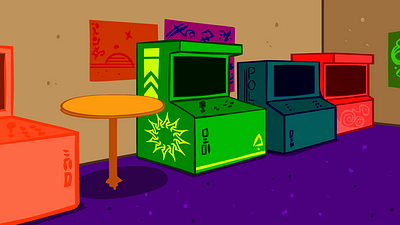
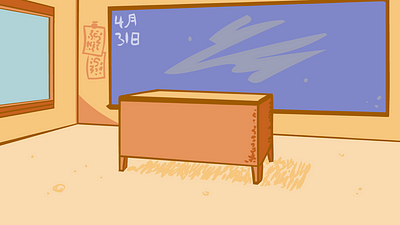
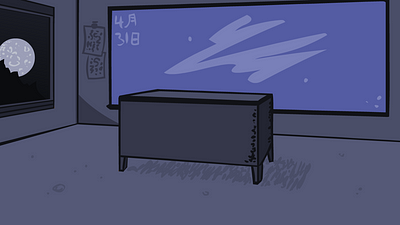
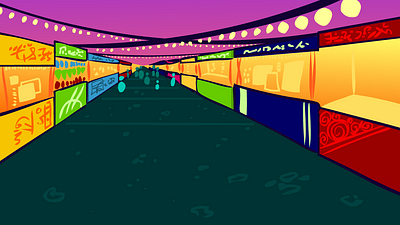
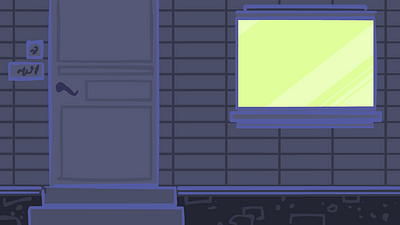
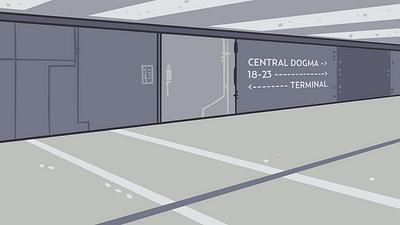
Additionally, I paid a third artist $80 to create a splash image, intended for the never-released Android port; I am currently planning to use this image for the soundtrack DLC.
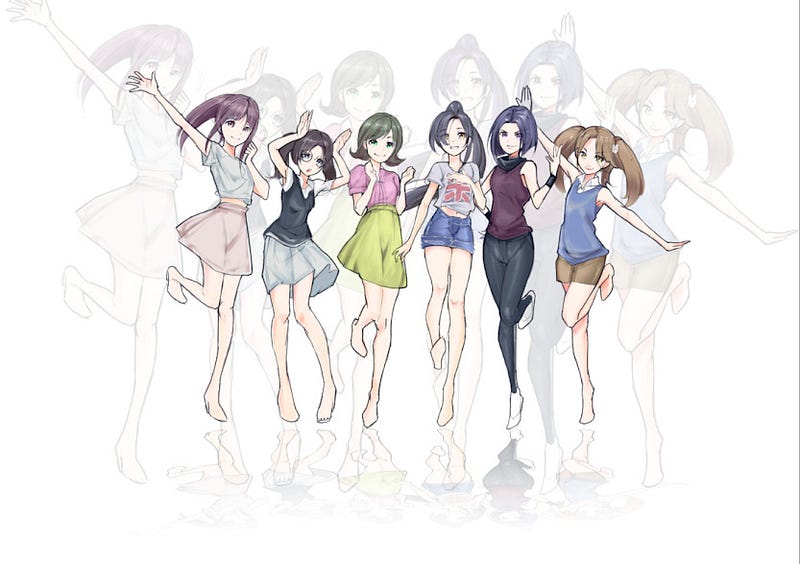
About halfway through the process of replacing my initial placeholder art with the commissioned work, I borrowed a drawing tablet and was able to begin to do substantially higher-quality work than my initial placeholder stuff. Ultimately, I ended up doing more complex and interesting pose and outfit changes because it had become easier to produce reasonable-quality drawings. The quality of character art in the finished product, although it is built on sketches by another artist, is more representative of my abilities than his.


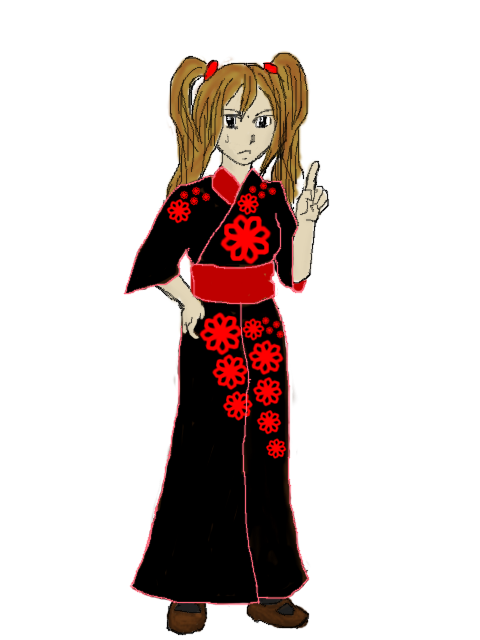
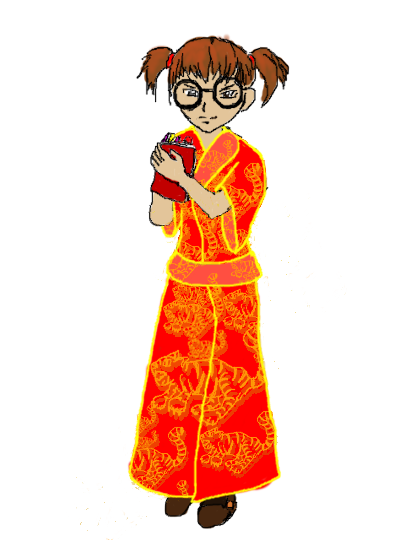
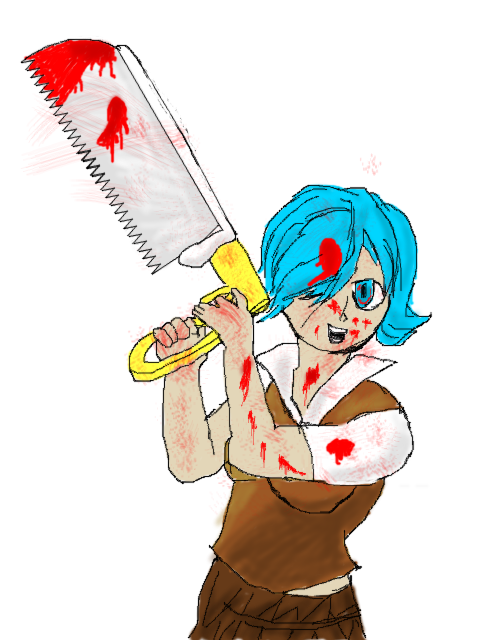
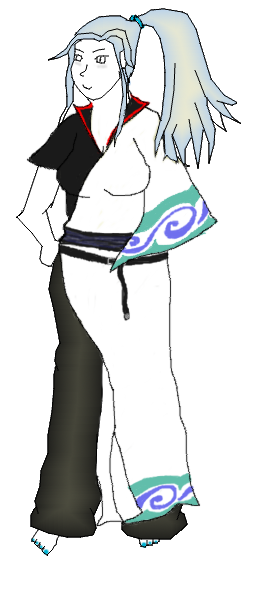
I commissioned art because I figured that by using professional quality art, I would get enough sales to make up for the cost. However, the art quality I could get within my budget was lower than what players on steam would call “professional quality”, even for a free game; at the same time, the clash between the cartoony style of the backgrounds and the anime style of the foregrounds probably added to the perception of poor art quality, and some compositing work I did for CGs ended up involving placing early placeholder art on top of finished backgrounds, which often looks genuinely bad.
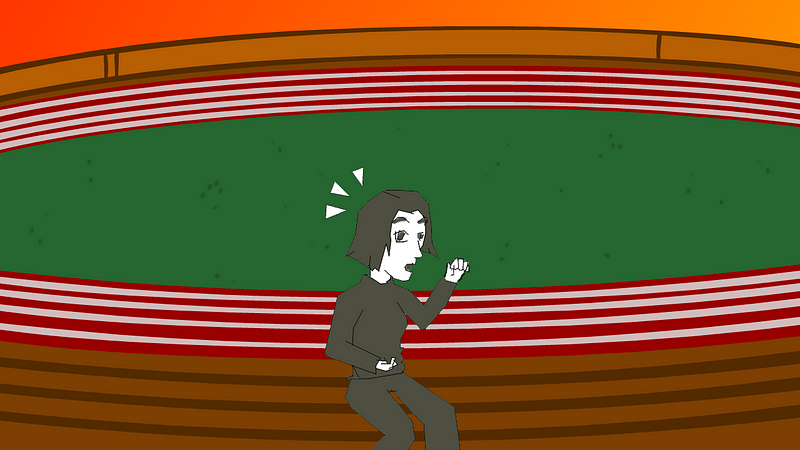
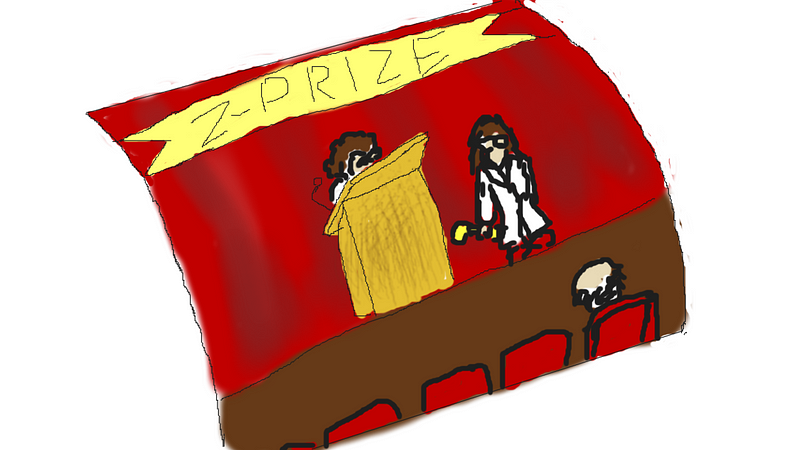
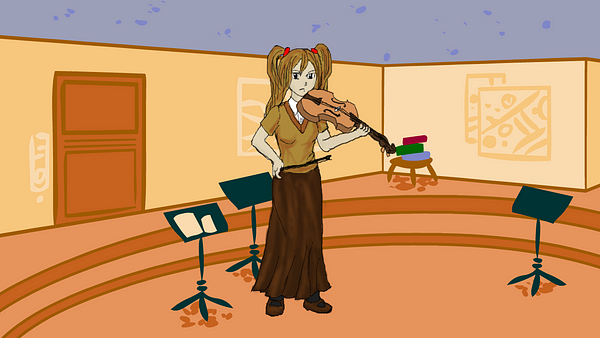

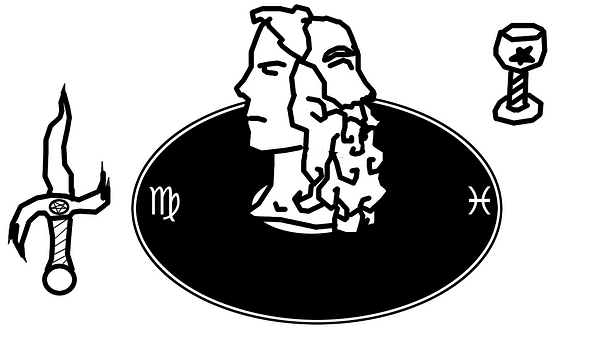
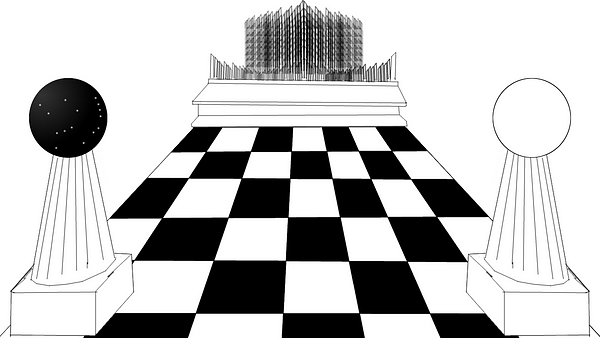
For future games, I plan to do all the art myself with the drawing tablet, and only commission art if I can afford it from existing sales (ex., to release a “remaster”). This brings my out of pocket costs down to $100. The art will cost me nothing, and the number of sales lost by having marginally worse art will be a small percentage of the total.
Pricing was also an issue here. Steam has a lot of really good-looking $1 or free VNs, made by big teams. I don’t know how anybody affords to do that, but it meant that because my game didn’t have completely professional-level art, I couldn’t make many sales at $4. Future games will probably be launched at $1. At that price, people are willing to take a chance on a game they have never heard of, even if it looks a little wonky.
Adding this game to a popular itch bundle did not increase sales or produce word of mouth. I suspect that, of the nearly one thousand downloads on itch, less than 10% actually played the game — though that is hard to tell, because itch doesn’t have play time or achievement statistics. However, when I release a sequel, I now have about a thousand people who I have a perfectly reasonable excuse to send a direct promotional email to. I suspect that will yield more purchases than steam’s launch promotion, or any of the sales this game has been a part of.
Of the 70 steam curators I sent a review copy of my game to, fewer than 10 wrote any kind of review. I am only counting curators who accepted the game. However, this didn’t cost me anything (other than time). I now know which curators are likely to play and review my game.
Oddly, I sometimes got emails asking for steam keys or review copies from the same curators who I had already submitted to on curator connect! Some of these, I hear, are scams.
I was surprised that there were not more complaints about the music in reviews. I am not a competent musician, and the soundtrack is almost entirely material I created years ago. However, this is a horror game: dissonant music is justified for setting the mood, and nobody can tell that, actually, I am only capable of making dissonant music. I don’t plan to make non-horror games in the future, so I can continue doing my own music.
Since a couple people even praised the music, I worked on getting the sound track onto steam as a DLC. This has not yet been successful.
The planned Android release never came out, because (before the game was finished) the mechanism in ren’py that produces android ports stopped working for me. The developer of ren’py says it works on his machine. I never considered mobile to be a primary target, so I didn’t put too much effort into fixing this. The mobile market is pretty big for casual games (including VNs) though, and so more effort here may be justified.
Putting games on Steam is a nightmare (especially compared to itch): Steam requires dozens of images of very specific dimensions, with specific information on specific regions of those images, and these image requirements change occasionally; configuring a game involves changing an enormous number of confusing settings, and at least once a minor change to ren’py broke the steam build in a non-obvious way; steam doesn’t let you just upload files, and instead you need to use a complicated and ugly third party upload application.
You are also charged $100 for the privilege of submitting your game for review. (I recall reading that at a certain point — perhaps $1000 in sales, perhaps 1000 sales, perhaps $1000 in royalties — you get that $100 back and are allowed to upload a second game, but I can’t find specifics on that anymore.)
Steamworks is very clearly an awkward Half Life 2 era Valve-internal tool barely updated on the grounds that developers are perfectly happy with being frustrated and confused. Also, the TOS makes vague threatening noises about the details of Steamworks config pages and such being Valve trade secrets, so I’m going to avoid being any more specific.
That said, Steam has a much bigger user base than itch, supports achievement statistics, and theoretically supports things like trading cards (which, again, unlock at some particular number of sales). Steam’s full-text reviews have been the best source of feedback about my game, and the “community hub” has reported bugs more reliably than anywhere else.
Getting promotion from streamers is a kind of double bind, especially for a narrative-focused game like this. Unless you are (or your game is) very popular (or you are very lucky), popular streamers and game reviewers will not touch it. I’ve been unable to get youtubers like Errant Signal (who has a indie/hidden gems/games worth trying series) and PushingUpRoses (who used to literally specialize in mystery-horror adventure games) to even look at it. Small (beginning or struggling) streamers are more likely to take a risk on some weird game, but they are advertising it to an audience of maybe 100 people total, and a small fraction of that audience is going to be interested enough to buy a copy. For narrative games, the prospect is even worse: does the streamer play through the whole game and spoil the ending, thus making a lot of viewers feel like they have gotten the full experience of the game without paying their $0.99?
In the case of this particular game, there’s a persistent problem that I didn’t expect: lots of people (even folks who play VNs and watch anime) have no idea how to pronounce Japanese words and names. MfoM is aimed toward weebs & there’s the expectation that the weeb audience will not just know how names are pronounced but understand that some of the names are puns. (For instance, Akagi = red shirt and Ai = love, and Akagi Ai is the constantly-dying asexual protagonist; Mimi = ear, yet Yamada Mimi is obsessed with visual mnemonics.)
Even though getting streamers to play your game may not be effective as advertising, it is still worthwhile in another way. For games developed by a single person, this is the easiest way to get a sense of how an outsider reacts. You could pay some playtesters, and they might tell you that some puzzle is too hard or too easy (though if it’s a narrative puzzle like in a VN, once they’ve solved it, you can’t use them to test whether some modified version is better), but unless you’ve convinced them to let you record them, you’re not going to be able to see when they are laughing at the jokes, or jumping at the jump scares, or how shocked they are by the shocking twists. You don’t necessarily get to hear them theorize about future plot developments or reason out choices.
Another lesson: most sales occur shortly after launch, and the long tail on sales, while long, is exceedingly thin. I’ve sometimes gone nearly a year without a single sale. This is in part because both steam and itch promote newly launched games in a special way.
I suspect that, for steam, launching a sequel will also promote the first game substantially — especially if I create a bundle with a discount for buying both. On both itch and steam, I can announce the sequel to all players of the original.